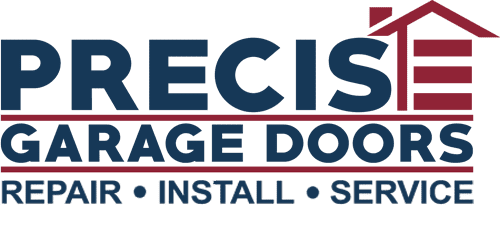Garage doors should also be inspected regularly. As with any door, lubrication and spring tensioning are important daily tasks. It’s better to do something now than wait until your door shows symptoms that require major garage door repairs.
What to do during your monthly garage door inspection
If you are experienced enough in garage maintenance, you can perform a monthly inspection to check if your overhead door is malfunctioning. Here are his five tips for monthly garage door inspections.
1. Listen for unusual noises
When creating a garage door inspection routine, one of the first things you should practice is familiarizing yourself with the sounds your garage door makes. A healthy garage door is completely different from a problem garage door. Unusual noises are one of the first signs that your garage door needs repair. It may be time to call a professional.
Overhead doors can make unpleasant noises over time, so it’s important to identify new doors that may indicate something is wrong. Pay attention to even the slightest pop or squeak, as this usually indicates that the drive chain may be loose. If your garage door is making strange noises, it could be caused by a variety of issues. Therefore, be sure to seek expert assistance promptly, especially if you’re experiencing an issue requiring urgent attention like emergency garage door service. If you can quickly identify the source of the abnormal noise, it may help narrow down the scope of repair needed.
2. Check the gap
Properly sealing your garage door is essential to protecting the contents of your garage and keeping the inside of your home safe. Outside air can enter under your garage door or through gaps between panels, putting your property at risk. Additionally, the conditioned air inside your home may escape, increasing your utility bills. When it comes to garage doors in Aurora, CO maintaining a tight seal is especially important during the colder months.
Make sure that overhead doors close completely and that there are no gaps within the door or between the door and the floor when it closes. Otherwise, adjust the automatic opener until the door reaches the weather-stripping or remove whatever is blocking the sensor. If you can’t fix the problem, have your garage door inspected by a garage door professional to determine the cause. Adjusting the way your door closes can be a difficult solution, but hiring a professional garage door technician can save you a lot of trouble.
3. Check if there is a problem with the remote control
Many garage door failures are caused by problems with the remote control. The remote control is used every day, so it wears out frequently. It is normal for garage doorknobs to become worn and unusable. It may be time to replace your buttons or replace your garage door remote entirely. For more information on how to check if your garage door remote control is defective, contact the remote control manufacturer.
Try replacing the batteries before purchasing a new remote control. If this fixes the problem, you’ll save money and be able to resume normal garage door operation. If you’re still having problems with your garage door remote control after making these fixes, it may be time to buy a new one.
4. Test the auto-reverse feature
Most garage doors have an automatic reversing feature for safety reasons. Check this feature monthly to see if it helps prevent accidents, especially for small children and pets. Most garage doors have two main types of automatic flipping features. The first one is pressure sensitive. If something gets in the way when the garage door closes, it will automatically reverse direction.
Place a 2×4 wooden block flat under the open garage door and close the door. If your garage door does not change direction when it touches a wooden block, you should contact a professional immediately. The second auto-reverse feature uses two light barriers to trigger reverse gear when something passes through its beam. Test this feature by closing the garage door and swinging a broomstick over a beam. If the feature does not work, adjust the position of both sensors and gently wipe the lens with a microfiber cloth. If the problem persists, please contact a professional.
5. Repair a stuck garage door
Garage doors can get stuck in the open or closed position for several reasons. Run the following maintenance tests to find the problem:
Align and clean the photovoltaic sensor: A misaligned or dirty sensor can trick your garage door into thinking something is blocking it and prevent it from closing.
Correct the position of your garage door: Your garage door may be misaligned and prevent you from closing it. Correcting alignment is difficult and even dangerous. To find out if your garage door needs adjustment, contact a professional garage door technician. Garage Door Opener Repair: If your garage door opener breaks, your garage door will no longer operate automatically. Tampering with your garage door opener yourself could do more harm than good. Therefore, immediately contact a professional for repair.
For repair services in San Diego, Call Precise Garage Doors
These are some of the things you can do every month to keep your overhead door in tip-top condition. However, like any other mechanical part, your garage door can eventually break. There may come a day when you will need professional services to repair your garage door. Precise Garage Doors is a garage door service company located in San Diego. We have been serving the area for over 25 years and look forward to adding you to our list of satisfied customers in the neighborhood.


